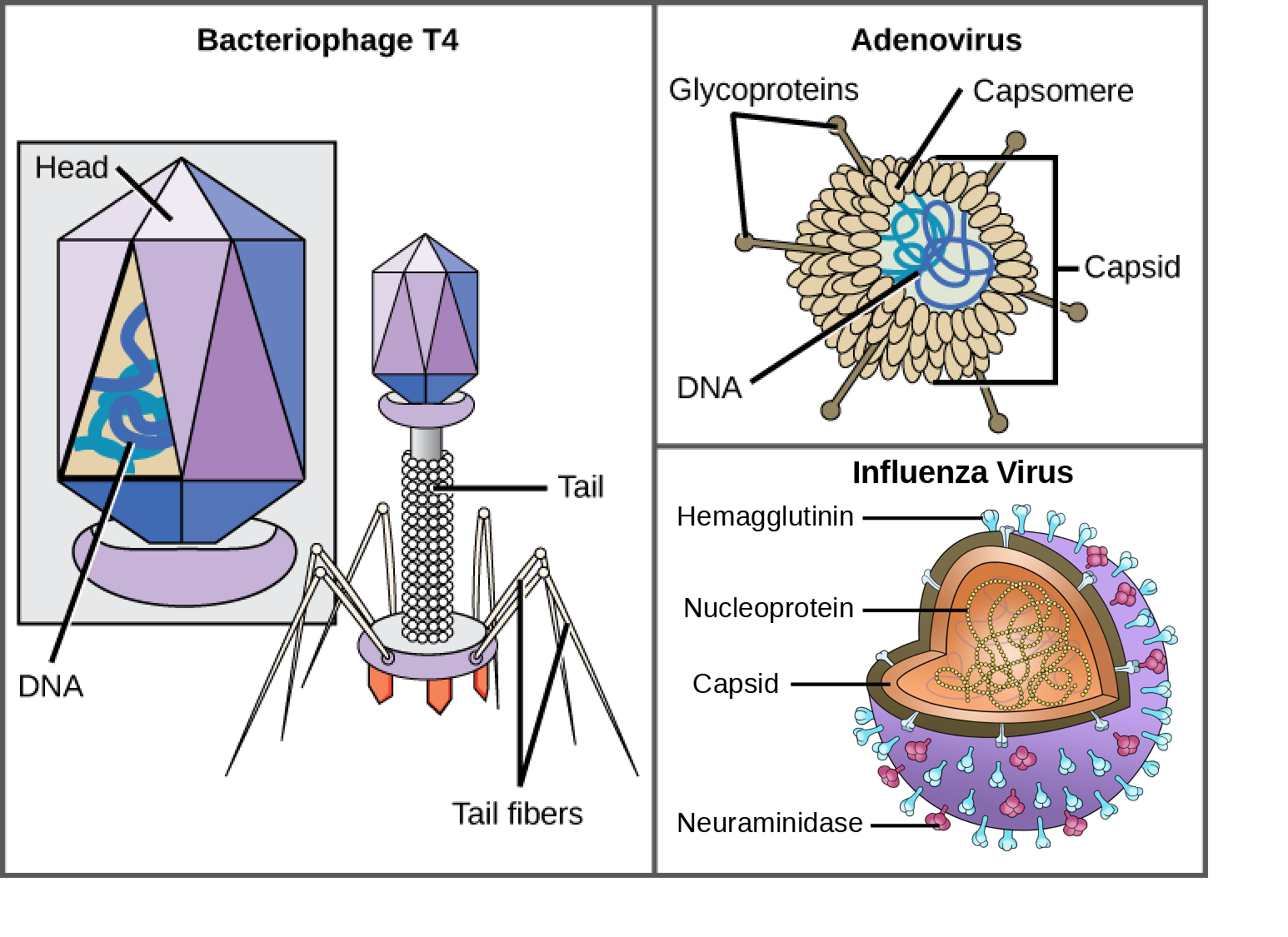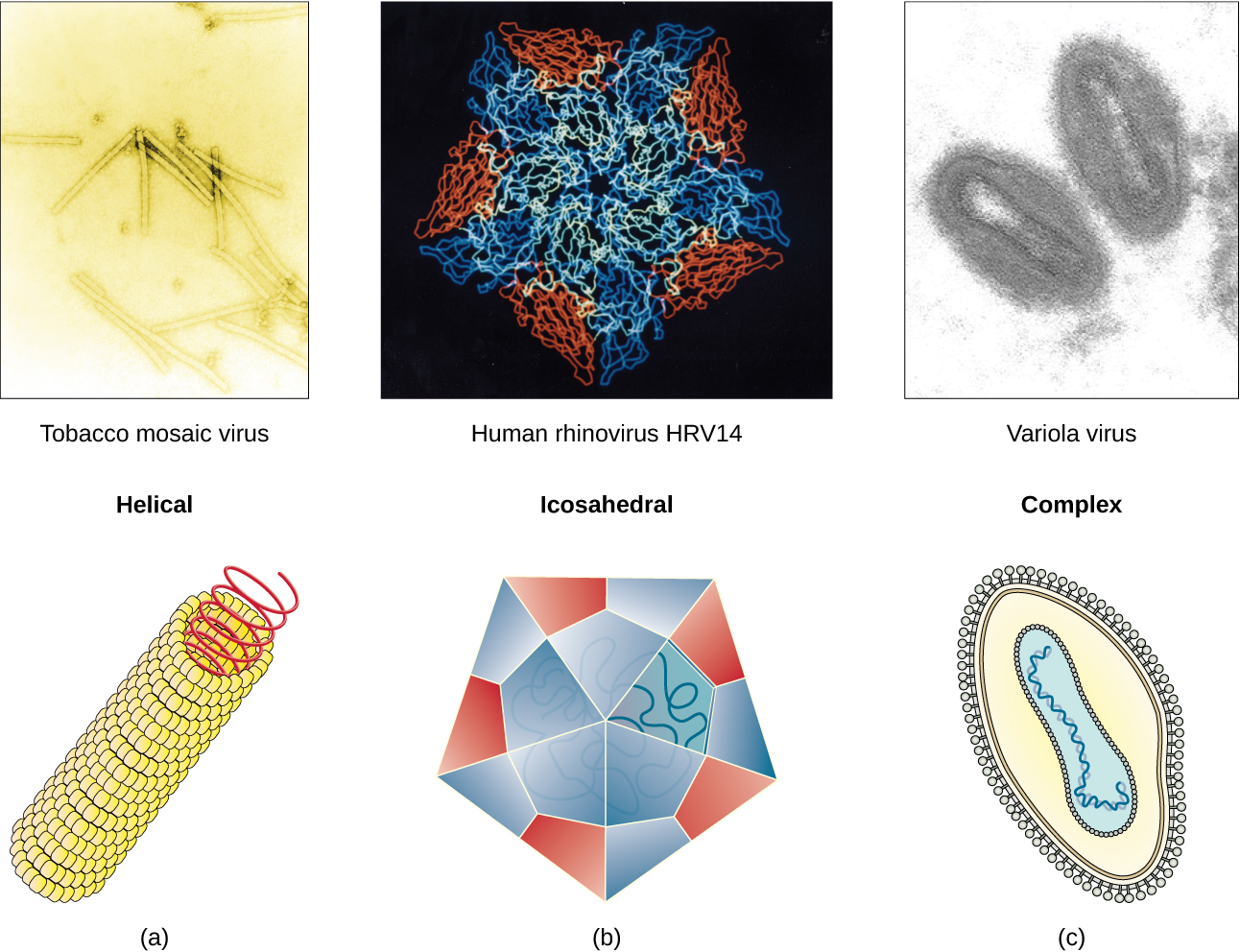1 Which of the Following Statements Is True of Viruses
Option b The capsomere is made up of small protein subunits called capsids Capsomere are small protein subunits that make up the capsid. Which of the following statements about virus structure is true.
12 1 Viruses Concepts Of Biology 1st Canadian Edition
DNA is the genetic material in all viruses.
. Which of the following statements about human papilloma virus HPV are TRUE. Both bacteria and viruses use host cells to reproduce but viruses kill the host cell immediately while bacteria maintain life within the host cell indefinitely. A Lytic phage b Lysogenic phage c The viral capsid d An infectious and fully formed viral particle.
Instead it must infect cells and use components of the host cell to make copies of itself. Please change all question marks to checkmarks for correct answers or empty boxes for incorrect answers A. The capsomere is made up of small protein subunits called capsids.
Which of the following statements about virus structure is true. So this is an incorrect option. Viroids have only exons.
Glycoproteins help the virus attach to the host cell. All viruses replicate only within the host cell. 245 Protozoan Infections of the Gastrointestinal Tract.
E All of the above. 6 Which of the following is true about viruses. All viruses are encased in a viral membrane.
Viruses use the host cell to reproduceiv. D They are not composed of cells. B The genetic code of the virus is the same as that in dog cells but is different from other organisms.
Enveloped viruses bud from the host cell. Which of the following is the genome of the virus. So this is an incorrect answer.
All viruses contian DNA as gentic material. Viruses are smaller than the bacteriaii. V V Viruses metabolize food and produce their own ATP.
The nucleic acid of a virus is surrounded by a protein coat. Which of the following statements concerning virus entry into cells is true. All viruses posses a protein coat around its genetic material at all stages of their life cylce.
7 Regarding Pasteurs experiments with the S-neck flask which of the following statements is true. All RNA-containing viruses are retroviruses. Often a virus ends up killing the host cell in the process causing damage to the host.
241 Anatomy and Normal Microbiota of the Digestive System. Animal Viruses and Viroids Prions. HPV is more resistant to disinfectants than is.
Bacteria only cause disease by entering the body through the bloodsteam and infecting a host cell and viruses only cause disease by entering through air passages. Viruses are non-cellular and parasitic and do not have any internal organelles metabolic process or plasma membrane. A virus cannot replicate alone.
To identify the cell surface protein that HIV uses to enter T cells researchers used. Viruses are active outside the host celliii. Viruses use the host cell to copy.
The capsomere is made up of small protein subunits called capsids. D The virus can enter cells. HIV contains two identical strands of DNA.
Viruses contain DNA or RNA not both. Viruses do not contain DNA or RNA. 1 a 1 a 2 b 3 c 4 a 5 b 6 c 7 a 8 a 9 a Go to.
False V Viruses have RNA rather than DNA therefore they are considered nonliving. A The virus can replicate in cells of all species but can only egress from dog cells. Both bacteria and viruses use host cells to reproduce but viruses kill the host cell immediately while bacteria maintain life within the host cell indefinitely.
244 Viral Infections of the Gastrointestinal Tract. Which of the following statements isare true about virusesi. However having a wide host range is not common and viruses will typically only infect specific hosts and only specific cell types within those hosts.
A retrovirus contains RNA. 242 Microbial Diseases of the Mouth and Oral Cavity. Which of the following statements are true about a virion.
A retrovirus contains RNA. C Viruses contain introns. C They cannot metabolize nutrients.
Viruses must somehow bypass both the cell membrane and cell wall if present to enter a cell and replicate. All viruses contain RNA as genetic material. Viruses cannot carry out transcription.
Most viruses will only be able to infect the cells of one or a few species of organism. The genome is integrated into the host chromosome during lysogenic growth. The capsid enters the host cell if the virus is enveloped.
Option a All viruses are encased in a viral membrane. This is called the host range. DNA is the genetic material in all viruses.
243 Bacterial Infections of the Gastrointestinal Tract. A They cannot reproduce themselves. Science Biology QA Library Which of the following statements about viruses is truea They contain DNAb They contain RNAc They contain proteind They are susceptible to lipid solvents.
Which statements about viruses are true. A DNA b RNA c DNA or RNA d DNA and RNA. A virus is an infectious microbe consisting of a segment of nucleic acid either DNA or RNA surrounded by a protein coat.
D An infectious and fully formed viral particle. B They have DNA or RNA. All viruses are obligate parasites ie they lack metabolic machinery of their own to generate energy or to synthesize proteins hence they depend on the host cells to carry out these vital functionsAll viruses contain either DNA or RNA as genetic material but not both.
All viruses are encased in a viral membrane. Solc DNA or RNA. Viruses may or may not have a viral membrane.
B Viruses have capsids composed of protein whereas viroids have no capsids. Glycoproteins help the virus attach to the host cell. HIV contains reverse transcriptase.
Viruses can infect every type of host cell including those of plants animals fungi protists bacteria and archaea. 246 Helminthic Infections of the Gastrointestinal Tract. C The virus can only attach to dog cells.
A Any possibility of contamination was removed. Bacteria only cause disease by entering the body through the blood steam and infecting a host cell and viruses only cause disease by entering through air passages. All of the following descriptions concerning viral multiplication and nucleic acids are true EXCEPT that.
Principles of Virology 1 b 2 g 3 h. D Viruses always have genomes composed of DNA whereas viroids always have genomes composed of RNA. Viruses replicate only in living cells viruses use the cells biosynthetic machinery to synthesize copies of themselves.
Evaluation and Other Factors. All viral genomes contain both DNA and RNA. The virion consists of a nucleic acid core of either DNA or RNA an outer coating of protein or sometimes may have an outer membrane which is made up of phospholipid membrane which is derived from the host cell and proteins.
Classify the following statements about viruses as true or false. A Viruses infect many types of cells whereas viroids infect only prokaryotic cells.
12 1 Viruses Concepts Of Biology 1st Canadian Edition

Viral Evolution Morphology And Classification Biology 2e

Comments
Post a Comment